Viburnum fruit and ornamental
Such qualities as beauty and benefits are not always combined in one plant. Such plants include viburnum. Some love it for its medicinal qualities, others for its beautiful appearance throughout the growing season.
| Content:
|
|
Viburnum (Viburnum) is a beautifully flowering ornamental shrub that can become a bright decoration of any garden. The genus Viburnum includes more than 160 species, growing mainly in the northern hemisphere. |
What types of viburnum are there?
Many types of viburnum are very decorative and are valued for their beautiful foliage, large numerous inflorescences and beautiful fruits. The sterile forms of some species are especially impressive, distinguished by the largest flowers in the inflorescence. Their main task is to decorate the garden, not the harvest. But in nature there are varieties of viburnum that meet both decorative and fruit needs. Most of them have edible berries.
Among the variety of varieties and types of viburnum, we tried to collect the best on this page, with a detailed description and photo of each variety.
Viburnum opulus (Viburnum opulus)
The species is a shrub 2-4 m high. The inflorescences are large and white. The flowers are large at the edges, and small flowers are located in the middle. The plant is distinguished by red fruits collected in clusters. The decorative diversity of this species is not the result of the work of breeders, with rare exceptions. More often, these are varieties growing in the wild in different parts of the world. They were identified and began to be grown as garden forms. The selection was based on the interesting shape of the leaves, beautiful veins on them, the extraordinary size of the inflorescences, and the color of the fruits.
Viburnum plicatum (Viburnum plicatum)
Viburnum folded lives in Korea, Japan, China and Taiwan. It is a deciduous shrub with a height of 1.5 to 3 m. The name comes from the alternating layers of leaves and flowers, which form a stepped structure with alternating green and white layers. The diameter of the inflorescence is 5–10 cm.The central sterile flowers are small, and the outer ones are large. The plant is not completely sterile and black fruits appear in small quantities in the fall. The fruits of viburnum folded are poisonous. Neither people, nor birds, nor animals can eat them.
Viburnum furcatum (Viburnum furcatum)
Viburnum fork is native to East Asia. The name of the culture comes from the shape of the branches; they look like forks. The plant is not self-fertile. Cross pollination will produce large red berries in late summer. In late autumn they darken and become almost black.
Viburnum lentago (Viburnum lentago)
Viburnum viburnum is a shrub consisting of many shoots or a single-stemmed tree up to 6 m high, with a dense oval crown. Another name is blue viburnum. At technical maturity, the fruits are scarlet, and when ripe, they change color to dark blue with a purple tint. The shape of the berries is ovoid. The fruits of this viburnum are edible and sweet. But they become especially sweet after the first frost. Autumn leaves are very decorative: burgundy, yellow, orange. The shoots are curving. The peculiarity of the shrub is that it forms a lot of shoots if it receives enough moisture. The growth of the shrub is very fast, it is shade-tolerant and highly frost-resistant.
Viburnum lantana (Viburnum lantana)
Another name for viburnum gordovina is black viburnum. The plant reaches a height of 5-6 meters. The stems are powerful, branched, the crown is dense and voluminous. The inflorescences reach a diameter of 10 cm. The fruits initially have a rich scarlet color, which after ripening is replaced by a coal-black color. Suitable for central Russia. Used in group and single plantings of recreation areas, parks, in the form of edges and hedges.Despite the fact that the fruits are edible, this type of viburnum is more often grown to decorate the garden.
Viburnum sargentii (Viburnum sargentii)
The garden appearance of viburnum is notable for the unusual shape of the leaves and the original color of the flowers. The culture is a powerful bush with many shoots. The leaves are bright green in color. The inflorescences are pistachio-green, white-pink, green-yellow or snow-white. The fruits are bright scarlet or golden yellow.
Viburnum wrightii (Viburnum wrightii)
Viburnum raita is a shrub with a straight trunk and many branches. The crown diameter reaches 1 m. Since 2008, this species is listed in the Red Book of the Russian Federation and the Sakhalin Region. This species began to be studied as a fruit crop only in the middle of the 20th century. It turned out that the berries are very healthy, are well stored and transported, and are easy to pick. The species is used not only as a berry plant, but also as an ornamental. In spring it pleases with fragrant and numerous inflorescences. The leaves are bright green in summer and turn bright orange-scarlet in fall. The berries are very juicy and deep scarlet in color.
Viburnum farreri (Viburnum farreri)
Decorative type of viburnum with fragrant flowers. The plant can reach a height of 2.5-3 m. The diameter of the crown can be about 2-2.5 m. The inflorescences are numerous, porcelain-white or pale pink panicles. The fruits are black, round, glossy.
Description of decorative varieties of viburnum
Decorative varieties of viburnum are increasingly found in garden plots and recreation areas. It is attractive due to its unpretentiousness in cultivation; the culture is responsive to minimal care. The advantage is frost resistance and drought resistance. The main advantage is the beauty of flowering, autumn leaves and delicious fruits.Thickets of decorative viburnum often serve as a backdrop for photo shoots.
Buldenezh (Boule de Neige)
|
This decorative variety of viburnum has been known in Europe for about 400 years. Buldenezh is an unpretentious, hardy plant. Up to 500 inflorescences are formed on the bushes of this variety. |
- The spherical bushes reach a height of 3.5 m. The growth rate is average. In autumn, the leaves add decorative value to the shrub. They become golden yellow in color.
- Flowering occurs in June for three weeks. The inflorescences are spherical and consist of sterile flowers. The diameter of the inflorescences is 10-15 cm. The flowers are soft green at the beginning of flowering, then become snow-white. At the end of flowering, they turn pink.
- The variety is unpretentious to soil fertility, humidity and location of growth. In landscape design, Buldenezh is used both as a tapeworm and in groups and hedges.
- Winter hardiness zone: 5 (-29°C).
Nanum
|
Nanum is a garden variety of Viburnum Farrera. A good honey plant. It has a slow growth rate and early flowering. Ideal for southern Russia. In the middle zone it requires shelter for the winter. |
- The bush is dwarf, up to 1 m tall, with a rounded, slightly flattened crown. The leaves are green-olive in summer, golden-orange in autumn.
- Flowering occurs in March-April, when there are still almost no leaves on the plant - the main advantage of the variety. The flowers are fragrant, small, pink in buds, white inside when blooming. Flowering lasts several weeks. Fruits are rarely set.
- Soil requirements are minimal: nutritious and moderately moist, neutral or slightly acidic are preferred. Loves the sun, but can grow in a semi-shaded place. Nanum is good in single plantings and is also recommended for flower arrangements.
- Winter hardiness zone: 5 (-29°C).
Compactum
|
A variety of common viburnum. The description and photo indicate the compact size of the crop, which is perfect for small areas. |
- The bush is low-growing, 1-2 m high. The crown is round, compact, up to 2 m in diameter. The growth rate is slow.
- The flowering of umbrella inflorescences begins at the end of May and lasts about a month. The flowers are fragrant, the outer ones are white, sterile, the middle ones are small, bisexual, white or pinkish. The fruits are bright red.
- Compactum prefers fertile soils, but is able to grow on calcareous soils. Does not tolerate waterlogging well. In the bush form, Compactum is used to create a hedge, in the standard form - as a single garden decoration.
- Winter hardiness zone: 4 (from -28°C to -34°C).
Onondaga
|
A very spectacular and profusely flowering ornamental variety of Viburnum Sargent. It is distinguished by beautiful flowering, unpretentiousness and winter hardiness. |
- The bush is vertical, thanks to straight shoots. Plant height is maximum 2 m. The leaves are bright scarlet in autumn.
- Flowering begins at the end of May and continues until mid-June. The inflorescences are large and fragrant. Along the edges there are large pale pink sterile flowers, in the center there are flowers with a burgundy color. The leaves are scarlet in autumn. The fruits are orange-red and ripen in September-October.
- The Onondaga variety is undemanding to soil and shade-tolerant. Used for single and group plantings, along the banks of reservoirs.
- Winter hardiness zone: 4 (from -28°C to -34°C).
Rotundifolium
|
Viburnum folded Rotundifolium is distinguished by drooping branches decorated with large inflorescences. This is clearly visible in the photo and description. The variety has good immunity to diseases. |
- The height of the bush reaches 4 m. The crown is dense and spreading.Drooping shoots. The leaves are dark green.
- Flowering with white loose inflorescences occurs in June. Their diameter reaches 15 cm.
- The fruits of Viburnum Rotundifolium ripen towards the end of summer. The berries are round in shape and collected in clusters. They may not crumble for a long time.
- The location is preferably in light shade and in a place protected from the wind. The plant grows well in ponds with loose soil.
- Winter hardiness zone: 4 (from -28°C to -34°C).
Xanthocarpum
|
Yellow-fruited variety of common viburnum. Brought out in Berlin in 1910. The bushes are compact and easy to shape. Rarely found in gardens. |
- The shrub is up to 1.5 m high, up to 2 m wide, and grows quickly. Vertical shoots form an oval crown. The leaves are light green in summer and red-purple in autumn. Clusters of large yellow berries add decorative value to the crop.
- The inflorescences are lush, milky white, umbrella-shaped. The fruits are bright yellow, shiny, large, edible.
- Fertile soils are preferred, but the crop can grow on calcareous soils. Does not tolerate waterlogging, is drought-resistant, and sun-loving. Xanthocarpum looks good in group compositions, decorates the banks of rivers and reservoirs, and is used in park plantings.
- Winter hardiness zone: 4 (from -28°C to -34°C).
Pink Beauty
|
The garden variety of folded viburnum Pink Beauty is actively used in the landscape design of park areas, flower beds, and summer cottages. It tolerates cutting well and can be used to form hedges. |
- The height of the bush does not exceed 1.5 m. The width of the crown grows up to 2.5 m. The shoots are located horizontally.
- Flowering occurs at the end of May - beginning of June. Flowering duration is 3 weeks. Inflorescences reach 10-12 cm.The color of the flowers varies from white-cream to pale pink. At the end of August, clusters of black fruits will appear.
- Winter hardiness zone: 6 (-23°C).
Popcorn
|
The Viburnum variety Popcorn is great for garden decoration. The shoots are made decorative by oval, jagged, pleated dark green leaves with pronounced veins. In autumn they turn burgundy-red. The variety is almost not susceptible to pest attacks. |
- The height of the bush is 1.5–2.4 m. The bush consists of many vertical shoots. The crown diameter is 1.2 m and does not change throughout life. The leaves turn dark red in autumn.
- Flowering is abundant and occurs in April-May. White flowers with small splashes of brown resemble ready-made popcorn.
- The Popcorn variety grows better on fertile soils. Prefers sunny or semi-shaded places. Extremely decorative both in single and group plantings.
- Winter hardiness zone: 3 (-40°C).
Aureum
|
The viburnum variety Gordovina Aureum is one of the most famous and beautiful viburnums with black edible fruits. The plant is decorative from spring to autumn. In addition, the variety is unpretentious in care and is not susceptible to diseases. |
- The height of the bush is 2-2.5 m. The diameter of the crown is 90 cm. The shrub is fast-growing, with beautiful golden oval leaves, slightly pubescent. In autumn the foliage turns deep pink and persists until early winter.
- Flowering begins in early May and lasts for a month. The inflorescences consist of small bell-shaped flowers of creamy white color.
- Undemandingness to soil is another positive feature of the variety. The crop is shade-tolerant, drought-resistant, and suitable for growing in urban environments.Used in group and single plantings of gardens and parks, in the form of hedges.
- Winter hardiness zone: 4 (from -28°C to -34°C).
Sweet, edible varieties of viburnum
Sweet varieties of viburnum exist and, of course, gardeners prefer to purchase them, combining business with pleasure. Fruit varieties of viburnum are not only valuable for their fruits, but also perfectly decorate a garden or personal plot. Viburnum berries are spherical or ovoid fleshy drupes, united in clusters. The color of the fruit can be ruby, burgundy, black or yellow.
Vigorovskaja
|
The variety of edible red viburnum (common) was included in the State Register in 1997. One of the best sweet varieties. It is characterized by high productivity, frost resistance and excellent immunity. |
- A tall shrub grows up to 3 m in height. In autumn, the foliage takes on bright colors and brightens the garden. We need pollinators.
- Productivity: 6-8 kg per season.
- The fruits are medium in size, up to 6 mm in diameter, with an average weight of 0.5 g. The shape is spherical. The color is red-orange with shine. The fruits ripen in early September. The pulp is juicy, sweet with a slight bitterness.
- Location recommended: sunny or partial shade.
- Winter hardiness zone: 3 (-40°C).
Ulgen
|
Another sweet variety of Russian selection. Refers to the species Viburnum common. Included in the State Register in 1995. Ulgen berries are champions in ascorbic acid content. Ulgen is used fresh, used to make jam, compotes, and juice. |
- The height of the bush is 2.5 m. The crown is quite wide and spreading.
- Productivity is more than 8-10 kg of fruits per season. Requires pollinators.
- Fruits, weighing 0.7-0.9 g. The taste is sweet with a slight bitterness. The berries are juicy with small seeds. The skin is bright red, ovoid in shape. The berries ripen in mid-September.Fruiting is annual. One bunch contains 40-50 berries.
- The location is preferably sunny or partial shade. Places with stagnant water should be avoided. The variety is undemanding in terms of soil composition, but develops better on nutrients.
- Winter hardiness zone: 3 (-40°C).
Red bunch (Krasnaya grozd)
|
Sweet berry with sourness and slight bitterness. The variety is unpretentious, drought-resistant, and not susceptible to disease or pest attacks. |
- The bush grows no more than 3 m in height.
- The harvest is modest - about 4 kg per bush, but of high quality. Vitamin C is greater than Ulgen's. And in autumn the bush decorates the garden with reddened leaves.
- Edible fruits ripen in mid-September. The berries are large, weighing 0.7-0.9 g. The skin color is dark red. The taste is sweet and sour. The purpose of the fruit is universal.
- Location recommended: sunny or partial shade.
- Winter hardiness zone: 4 (from -28°C to -34°C).
Zholobovskaya
|
Frost-resistant fruit variety of red viburnum (common), resistant to diseases. Included in the state register in 1995. Approved for cultivation in all regions of Russia. |
- The bush grows a maximum of 3 m in height. The crown is compact. The shoots are straight and spreading. The variety requires pollination.
- The yield reaches 5 kg per bush.
- The fruits are edible, burgundy, fleshy. The taste is sweet with a slight bitterness. The harvest ripens in September. The berries are medium in size, weighing 0.6-0.7 g. The shape is spherical.
- The garden variety is not picky about soil composition. Loves watering.
- Winter hardiness zone: 4 (from -28°C to -34°C).
Maria
|
Another edible variety of viburnum with sweet fruits. In addition to good taste, the berries have a delicate aroma. The fruits are attractive due to their original color - they are light red. In autumn the foliage takes on a dark orange hue. The berries are well transported.Disease resistance is above average. |
- Plant height 2.5 m.
- Productivity is about 8-10 kg per plant. Ripening lasts from late August to mid-September.
- The fruits are round, weighing 0.4-1.8 g, light red in color. The taste is peculiar, sour with a slight bitterness.
- Location recommended: sunny or partial shade. Wetlands and low-lying areas should be avoided. The variety is undemanding in terms of soil composition, but develops better on fertile, moist lands.
- Winter hardiness zone: 3 (-40°C).
Garnet bracelet
|
The red viburnum variety is not only a productive fruit shrub, but also an ornamental plant. |
Viburnum Garnet Bracelet is winter-hardy and unpretentious. Tolerates transportation well. Gardeners consider it the best because of its versatility. Registered in the State Register since 2006.
- A medium-sized shrub, 1.5-2.5 m high.
- The yield per bush is 12 kg or more.
- The fruits, weighing up to 1 g, ripen in late September - early October. The skin is dark burgundy, dense. The berries are collected in dense clusters. The taste is sweet and sour with a pleasant bitterness.
- The variety is unpretentious to the soil, but loves well-lit places. Prefers moderate watering.
- Winter hardiness zone: 5 (from -29° to -23°).
Taiga rubies (Taezhnye rubiny)
|
The variety Taiga rubies belongs to the garden variety of Viburnum viburnum. An excellent winter-hardy variety. Practically not susceptible to diseases and pest attacks. Entered into the State Register in 1994. |
- Tall bush, 4 m high. The crown is round-oval. Requires pollination.
- The yield is up to 10 kg per bush.
- The berries are edible, spherical in shape, weighing 0.6 g. Collected in clusters of 40–65 pieces. The pulp is yellow. The taste is dominated by sweetness, therefore it is widely used in fruit gardening.
- Prefers moist soils and a lot of light, but does not exclude a location in partial shade.
- Winter hardiness zone: 3 (-40°C). The variety is recommended for cultivation in all regions of Russia.
Leningrad Selective
|
The garden variety of viburnum has good winter hardiness and immunity to diseases and pests. |
- The bush is compact, 2-2.5 m high.
- The yield is 6-8 kg per plant. Requires the proximity of pollinator varieties.
- The berries are edible, large, and ripen in August. The shape is round. The skin is red. The taste is sweet. The pulp is juicy.
- Leningradskaya selective is unpretentious to soils, but loves moderate moisture and lighted places.
- Winter hardiness zone: 4 (from -28°C to -34°C).
Similar articles:
- The best varieties of edible honeysuckle with sweet berries ⇒
- Types and varieties of garden hawthorn ⇒
- Garden cranberry varieties with descriptions and photos ⇒
- Description of the 20 best varieties of garden blueberries with photos and reviews ⇒
- Garden varieties of decorative and fruit rose hips with descriptions and photos ⇒
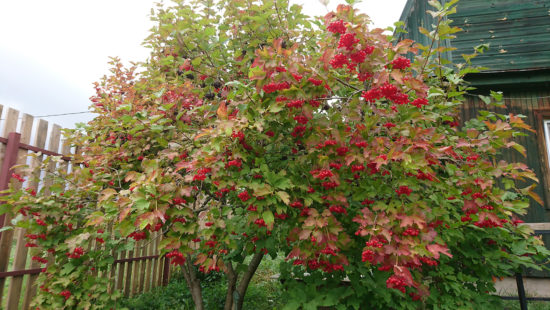
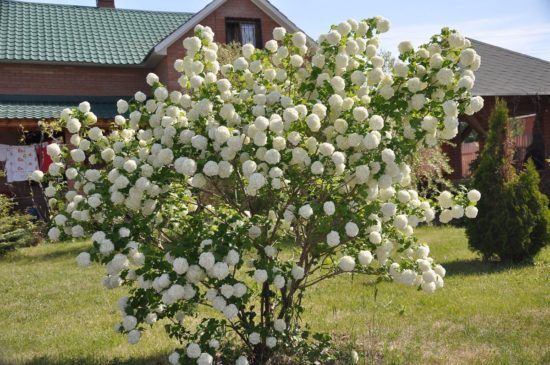
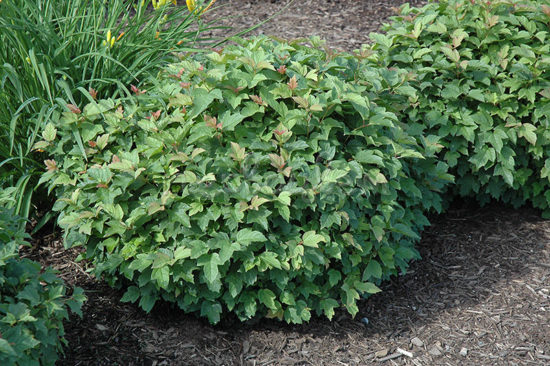
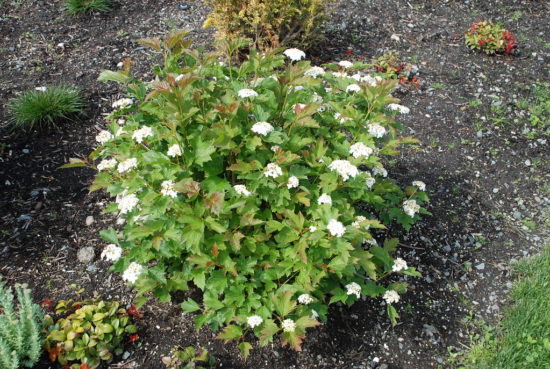
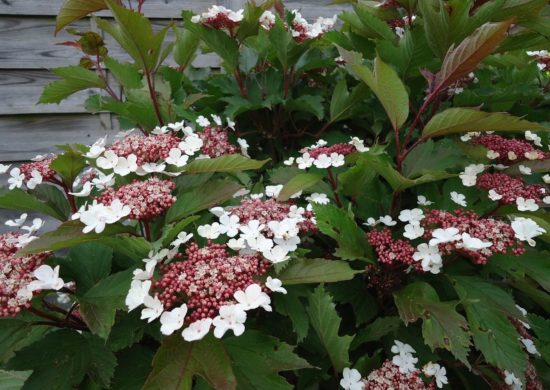
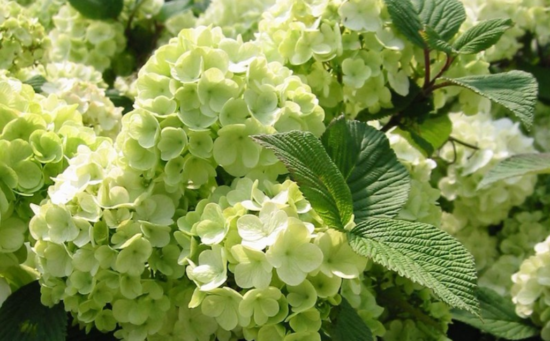
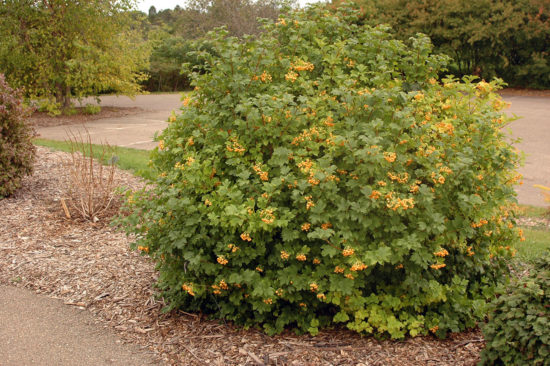
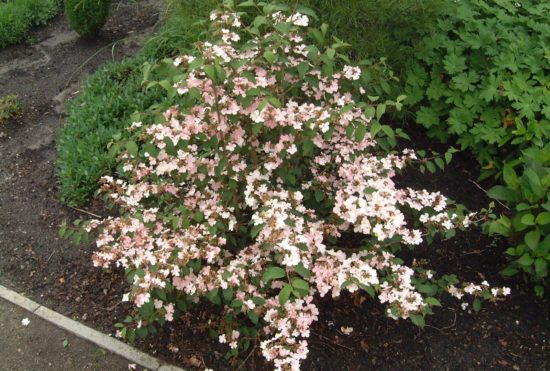
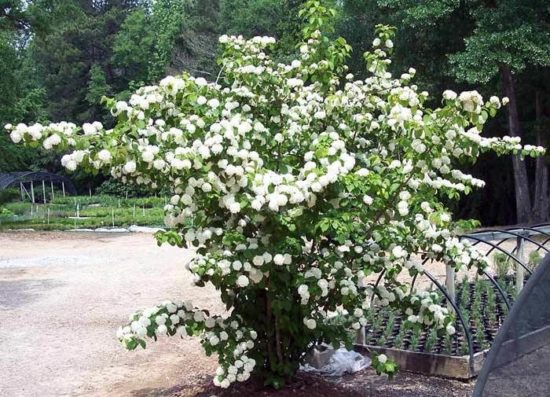
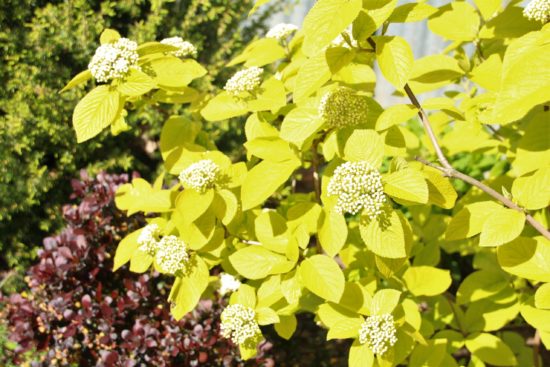
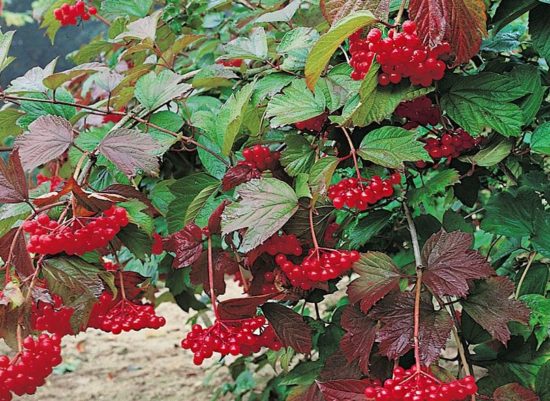
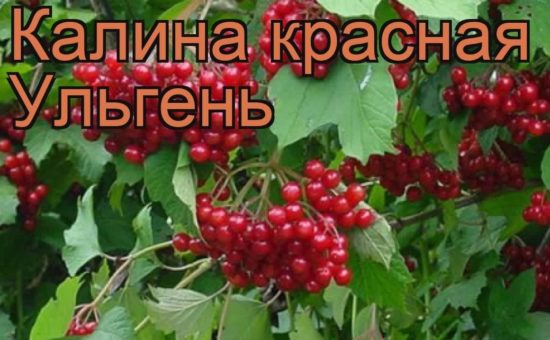
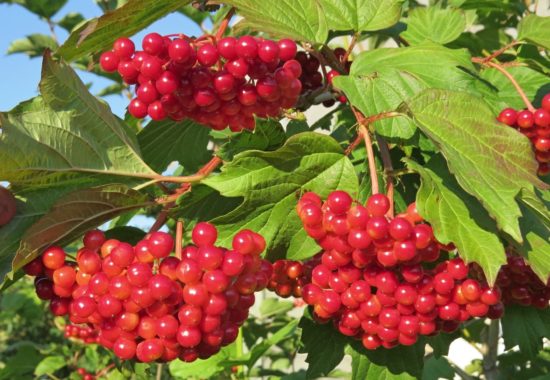
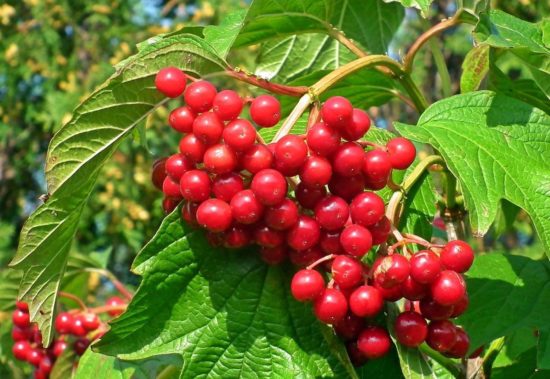
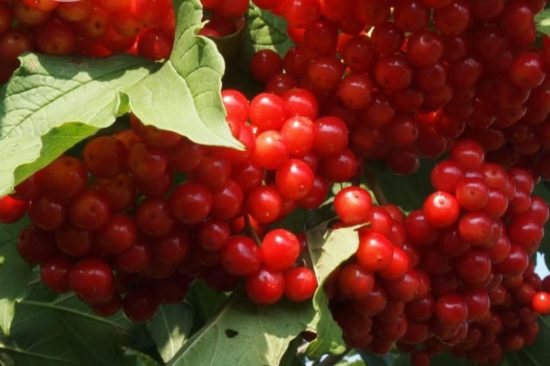
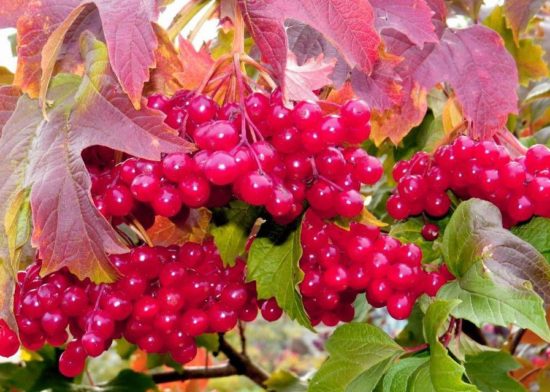
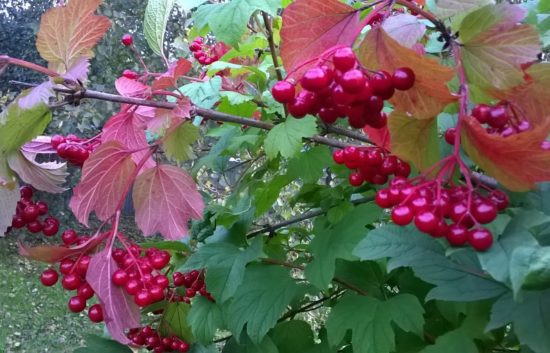


 CUCUMBERS NEVER GET SICK, I'VE BEEN USING ONLY THIS FOR 40 YEARS! I SHARE A SECRET WITH YOU, CUCUMBERS ARE LIKE THE PICTURE!
CUCUMBERS NEVER GET SICK, I'VE BEEN USING ONLY THIS FOR 40 YEARS! I SHARE A SECRET WITH YOU, CUCUMBERS ARE LIKE THE PICTURE! You can dig a bucket of potatoes from each bush. Do you think these are fairy tales? Watch the video
You can dig a bucket of potatoes from each bush. Do you think these are fairy tales? Watch the video
 How our fellow gardeners work in Korea. There is a lot to learn and just fun to watch.
How our fellow gardeners work in Korea. There is a lot to learn and just fun to watch. Eye trainer. The author claims that with daily viewing, vision is restored. They don't charge money for views.
Eye trainer. The author claims that with daily viewing, vision is restored. They don't charge money for views. A 3-ingredient cake recipe in 30 minutes is better than Napoleon. Simple and very tasty.
A 3-ingredient cake recipe in 30 minutes is better than Napoleon. Simple and very tasty. Therapeutic exercises for cervical osteochondrosis. A complete set of exercises.
Therapeutic exercises for cervical osteochondrosis. A complete set of exercises. Which indoor plants match your zodiac sign?
Which indoor plants match your zodiac sign? What about them? Excursion to German dachas.
What about them? Excursion to German dachas.